Trip Overview: Son Doong Cave Expedition
- Dates Traveled: May 1–6, 2025
- Season: Early Summer (Vietnam)
- Expedition Length: 6 Days, 5 Nights
- Location: Phong Nha-Kẻ Bàng National Park, Quảng Bình Province, Vietnam
- Tour Operator: Oxalis Adventure (official & only licensed guide service)
- Expedition Name: Son Doong Expedition Tour (PS: Drop me a DM if you want a 5% discount)
Trek Summary
- 3 nights camping in caves. Different camp each night.
- 25 km distance in total.
- Some technical sections. Lots of rocky terrain.
- Average 6 hours of trekking per day.
- Opportunities for photography.
- Each day is very different (view and terrain).
- 3 generous (and delicious) meals a day.
Wetness Levels by Day
Each day, the terrain and moisture shifted:
- Day 1: Jungle trek + river crossings up to your thighs. Guaranteed wetness. The sun beats down on you, so make sure to bring a handheld or portable fan (trust me, you don’t think you need it until you do).
- Day 2: More river crossings. Cave descent into Son Doong. Completely drenched by the end of the day, as the group swims in an underground river before camp.
- Day 3: Summer temperatures outside meant condensation inside the cave. It also meant very slippery rocks. You’re in the cave the entire day, but it doesn’t feel like it as you pass through a jungle and momentarily forget that you’re still in a cave. Day 3 is undoubtedly my favourite day of the expedition.
- Day 4: Your gear’s not dry by now, just less wet. Before the day ends, you’re reminded that wet socks are a daily thing, but your heart is so full that you barely notice.
Day 1: Into the Green
I said my goodbyes to friends and family, half-joking, “If I don’t make it out, I’ll be somewhere in this cave.” Moments later, my cell service vanished, and just like that, I was officially off the grid.
Eleven and a half kilometers. That’s what stood between us and the gateway inside the Earth.
Our journey began beneath a jungle canopy alive with butterflies, thick humidity, and with every step, the outside world fell away. The deeper we walked, the more surreal it felt. This wasn’t just a trek. It was a transition.
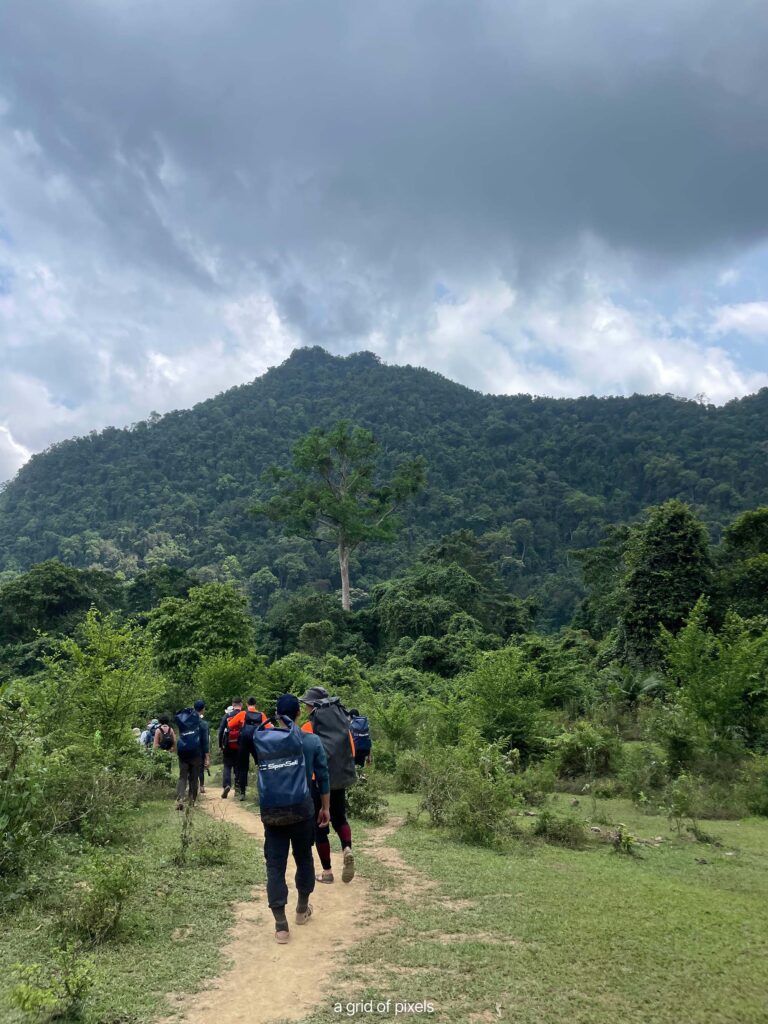
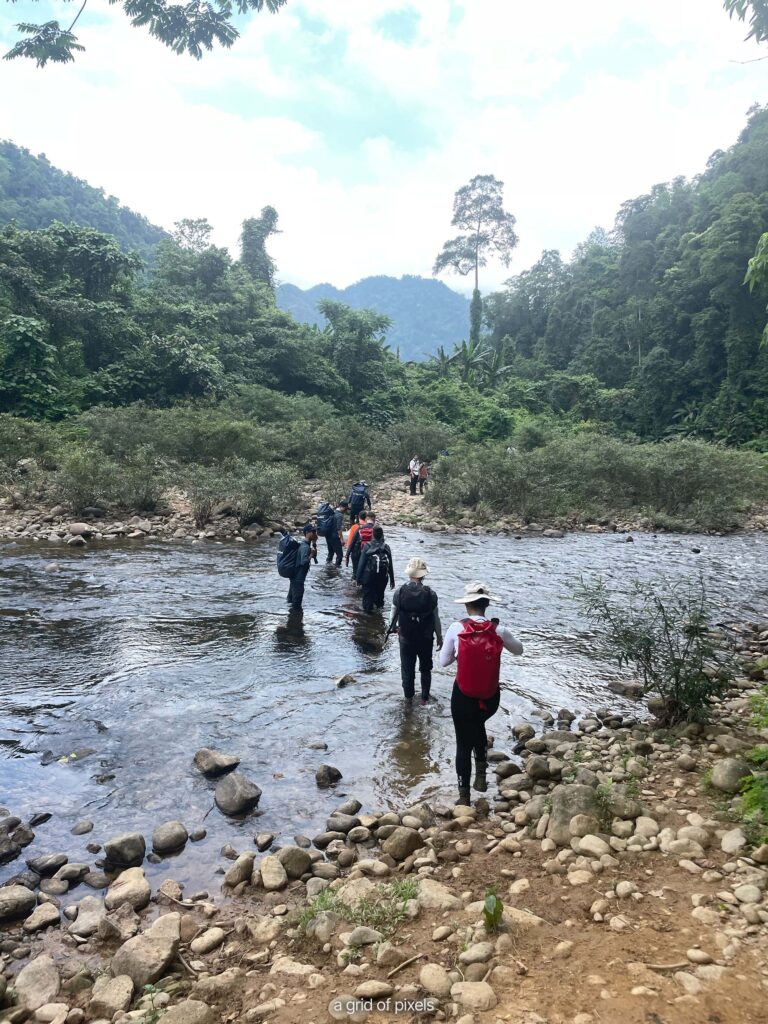
After hours of hiking, we reached the yawning mouth of Hang En Cave, the third-largest cave in the world. We needed a raft to cross its subterranean river, our first taste of cave life. The cavern was cathedral-like, echoing with the constant chirping of birds, nested in the cave ceiling.
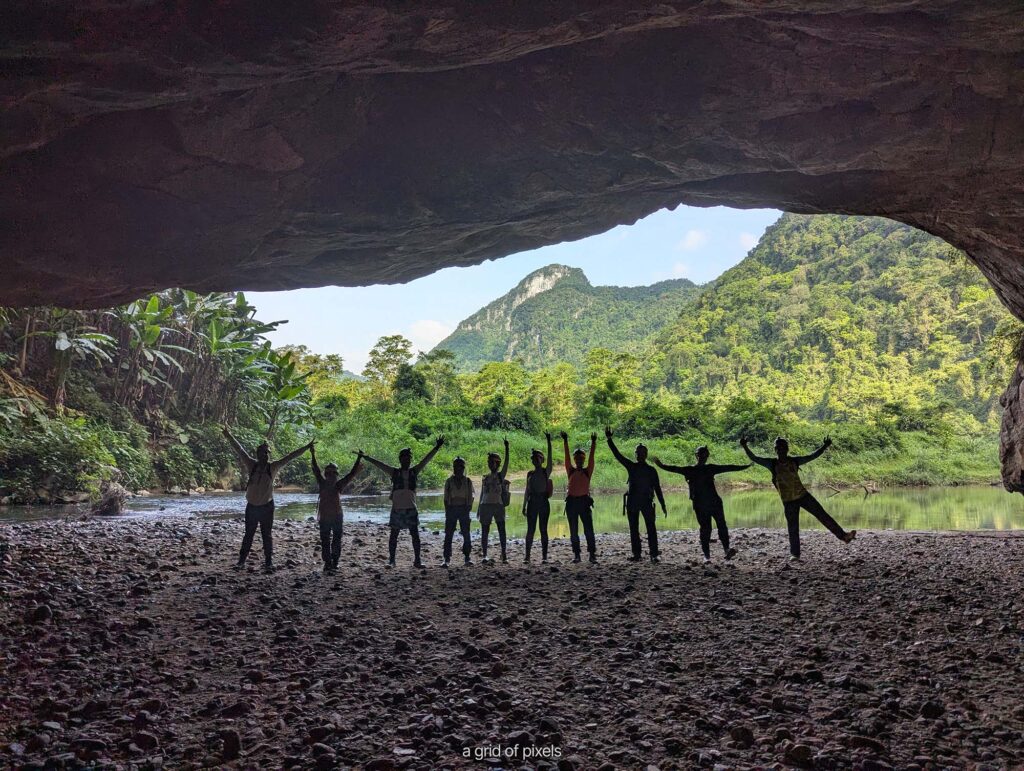
That night, dinner was served by headlamp on soft sand inside the cave. Hearty, delicious, and humbling. It finally hit me: this was real. We were on a cave expedition. And this was only the beginning.
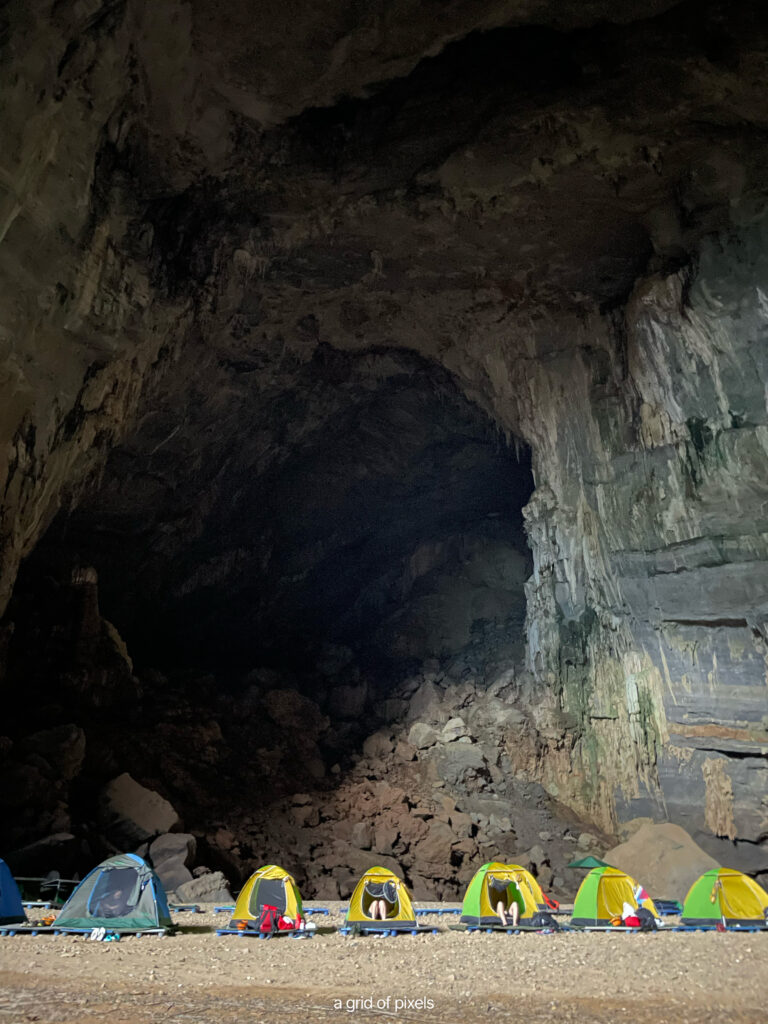

Day 2: The Descent
We woke up inside the Earth, surrounded by towering walls and a ceiling dotted with millions of bird nests. Hang En wasn’t just a cave… It was a living ecosystem. The sound of millions of birds reminded us that we were temporary visitors in a place far older and wiser than us.
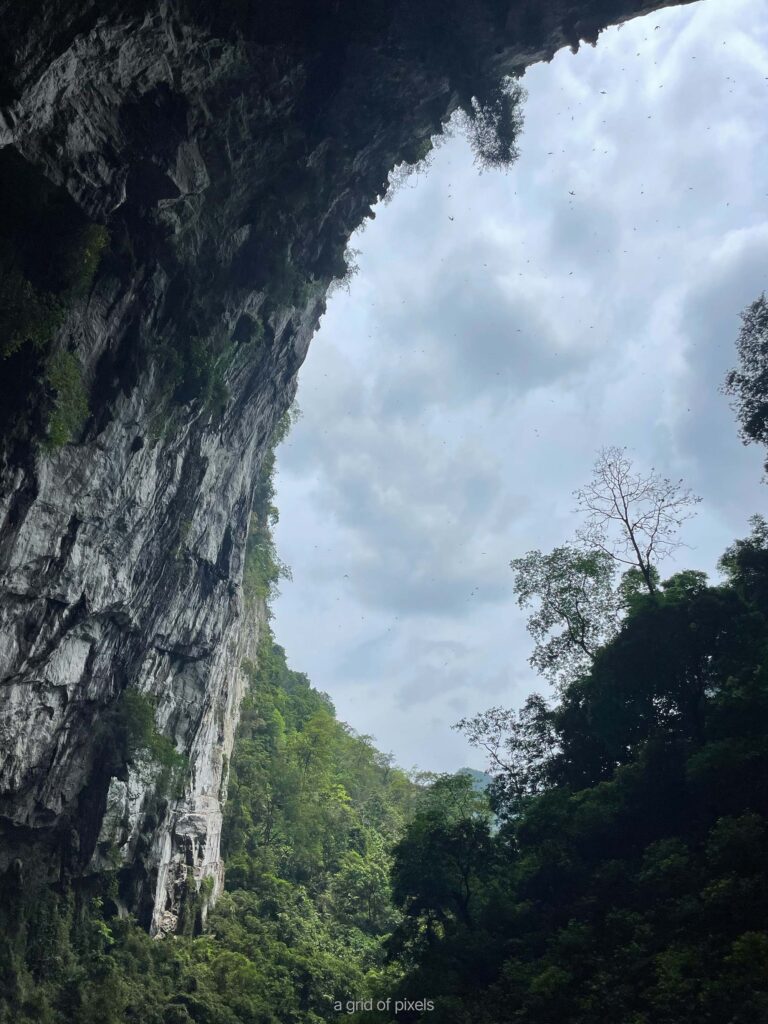
We began the day with a short hike to a viewpoint above Hang En. Looking down, the sheer scale of the cavern came into perspective. Hang En felt like leaving a cathedral carved by time itself.
That morning, we came across an injured bird on the sand. It was a quiet moment. We knew it wouldn’t survive, so we let it go on the cave’s sandy floor. That brief encounter said everything about the fragility of life here.
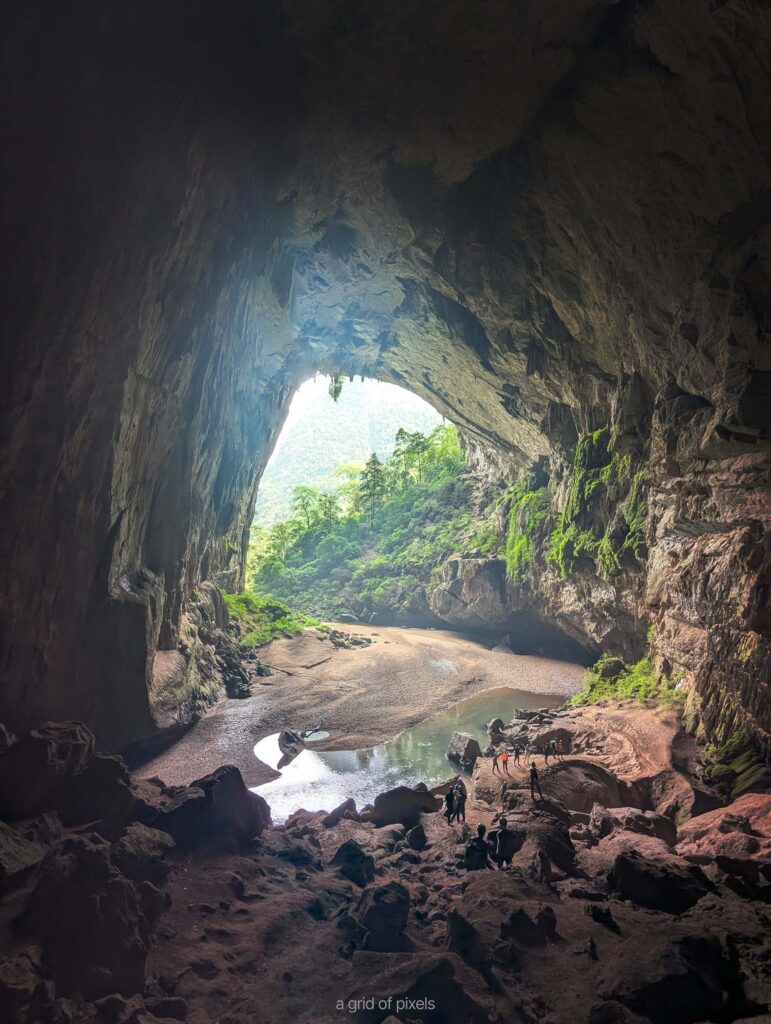
We continued to hike through the jungle, climbing over tangled roots and ducking under thick foliage. Hours later, we paused for lunch at a small clearing.
After lunch, we continued deeper into the forest. Then, came the moment we had all been waiting for. A rush of cool wind signaled it. We were about to enter Son Doong, the world’s largest cave. We descended into its darkness, abseiling with trembling excitement.
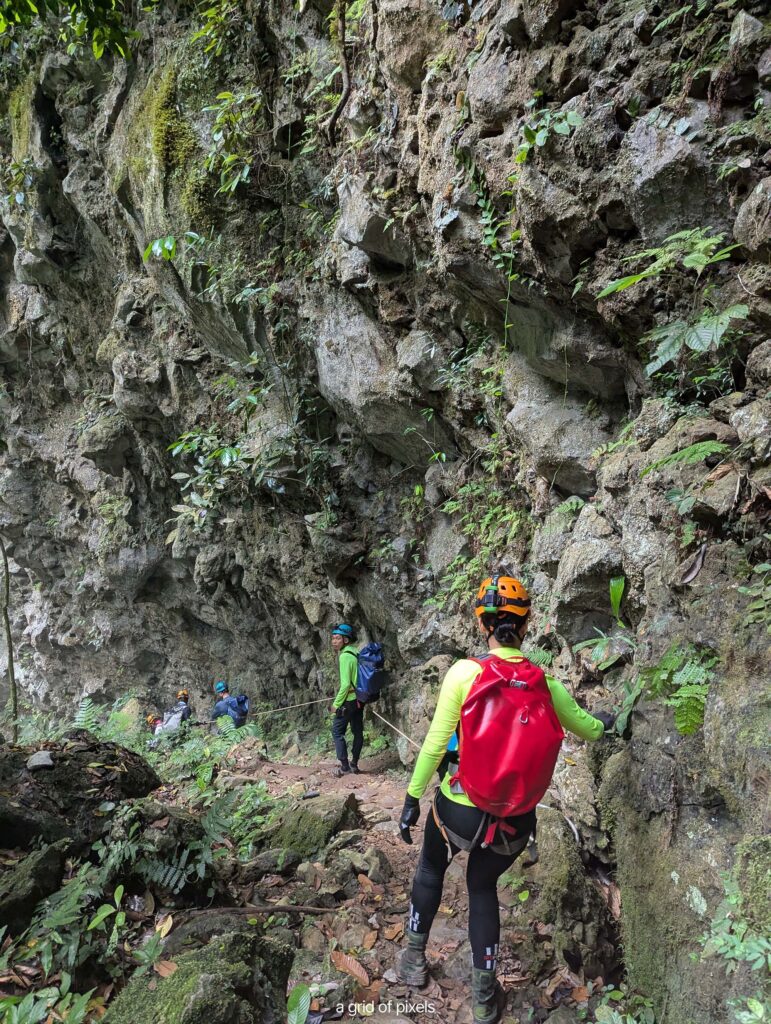
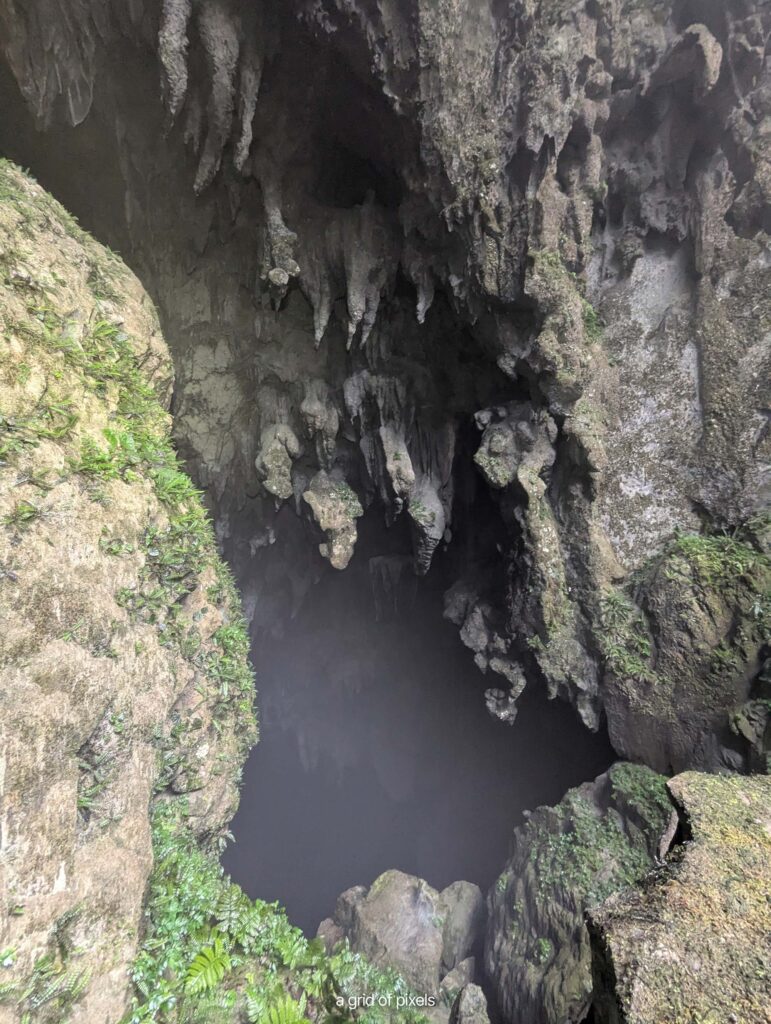
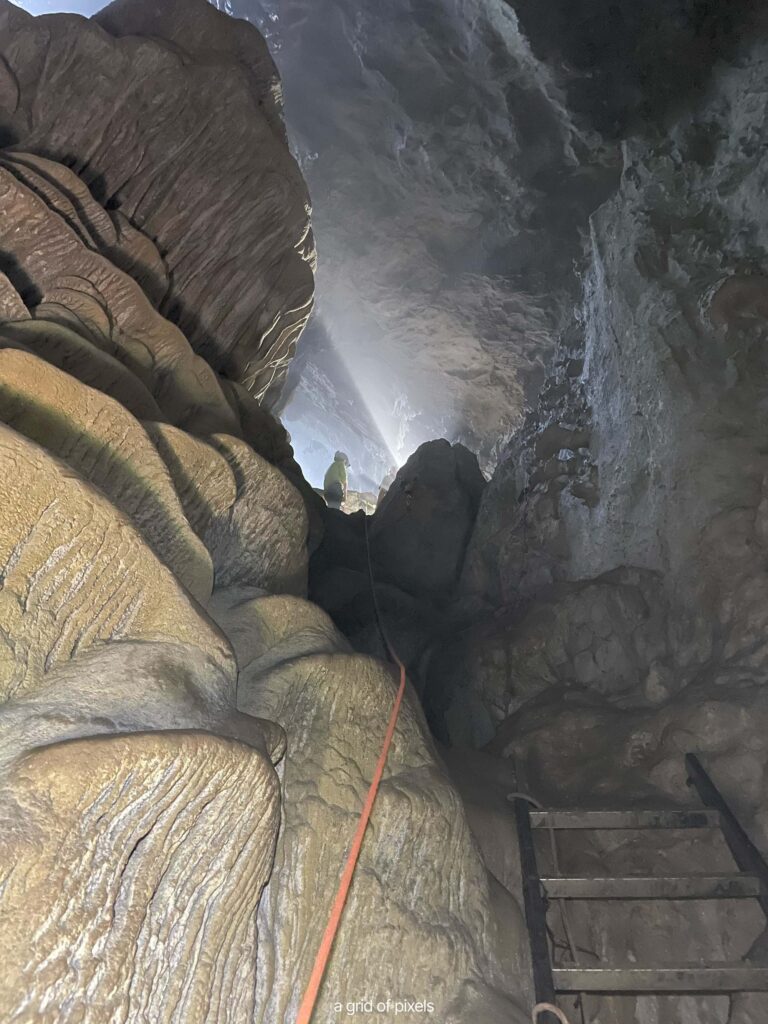
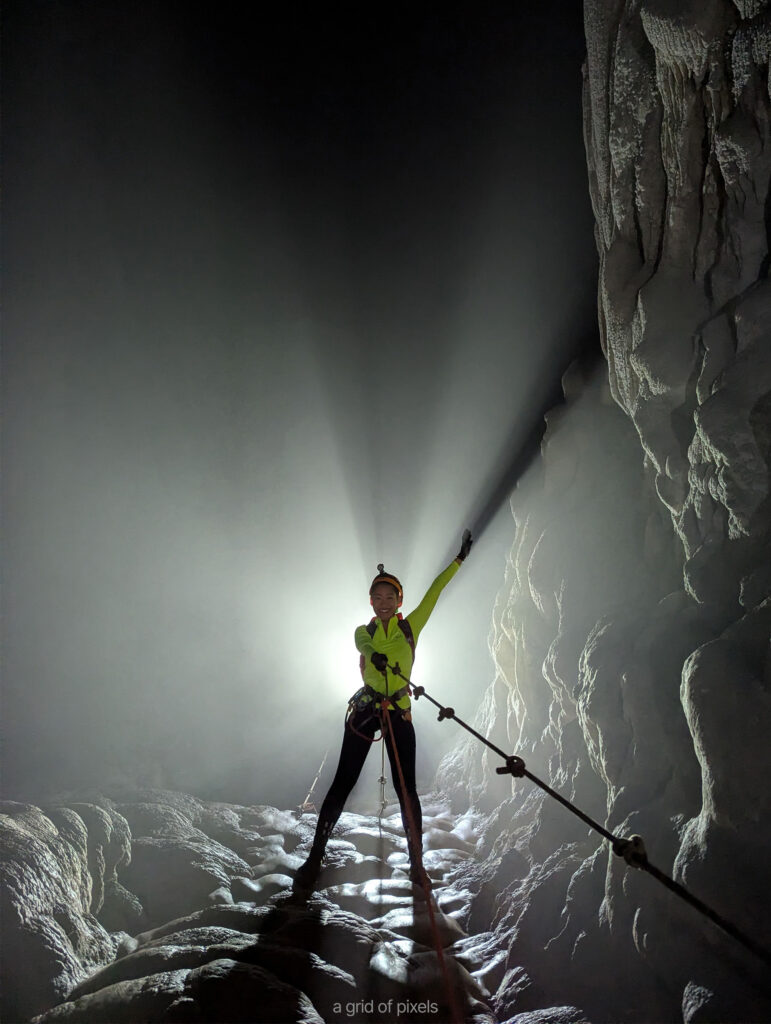
During the rainy season, the entire cave floods. Seeds from the jungle above wash into the cave and attempt to grow. You can see them. Tiny green rebellions sprouting in impossible places. But there’s not enough sunlight. Every year, these plants try, fail, and try again. Nature’s quiet persistence.
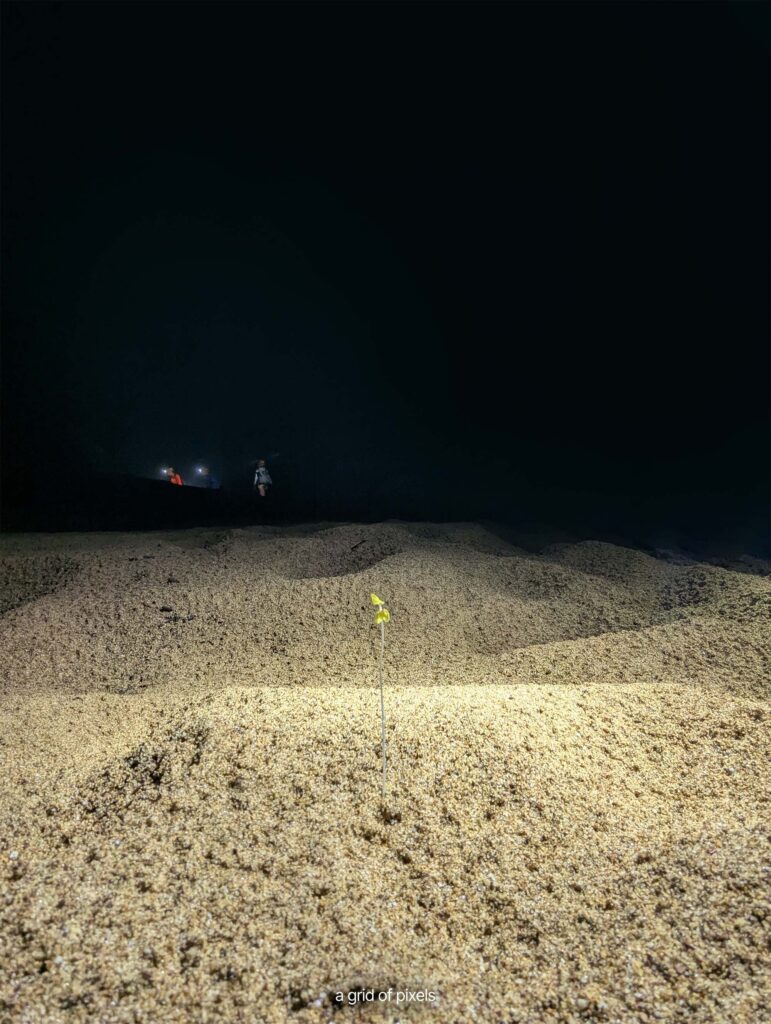
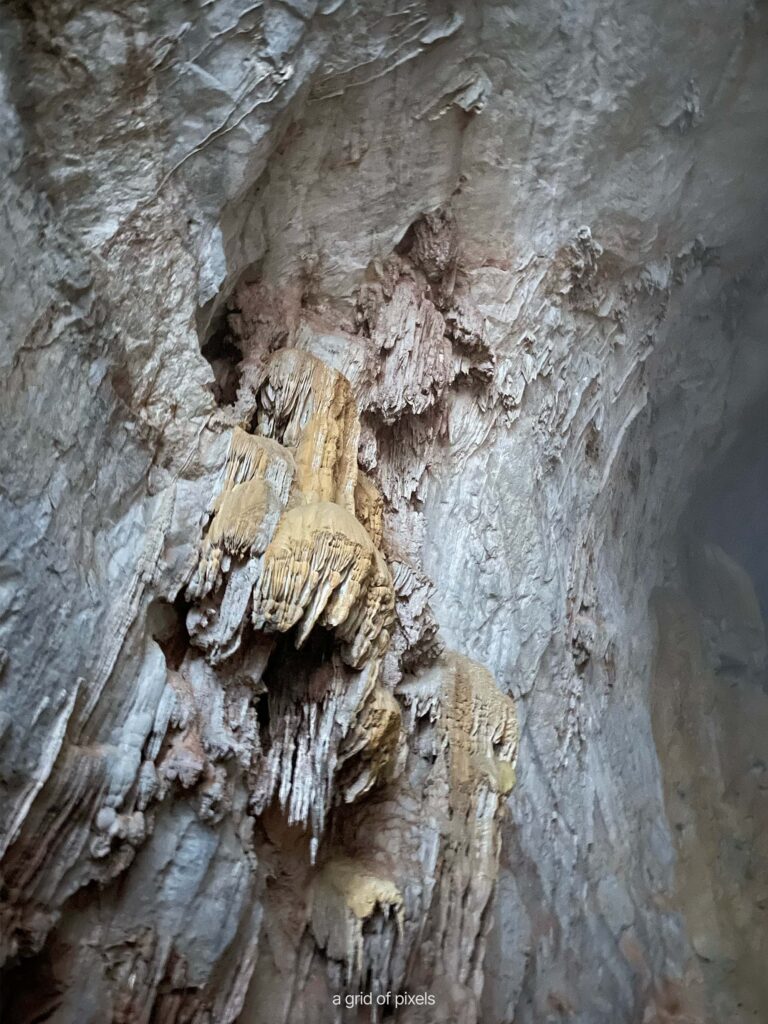
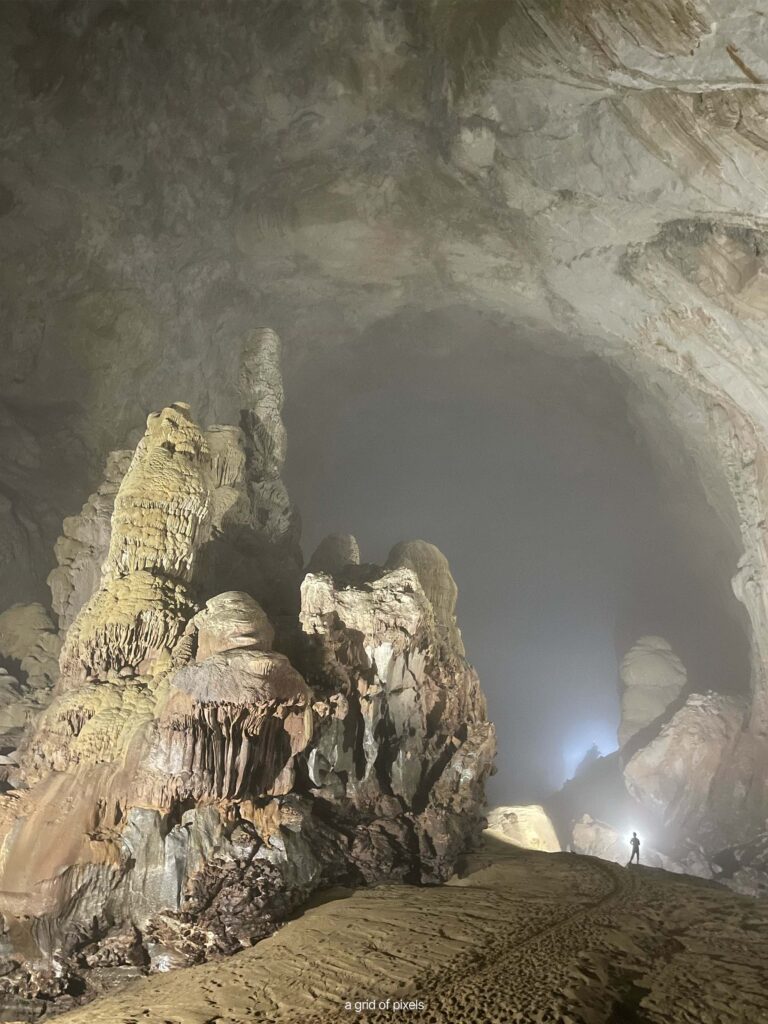
At one point, our porters climbed massive stalagmites and shone their headlamps into the abyss. The beam disappeared into the distance. It was like watching a crew light the stage for a play with no audience. Just us, the cave, and echoes of silence.
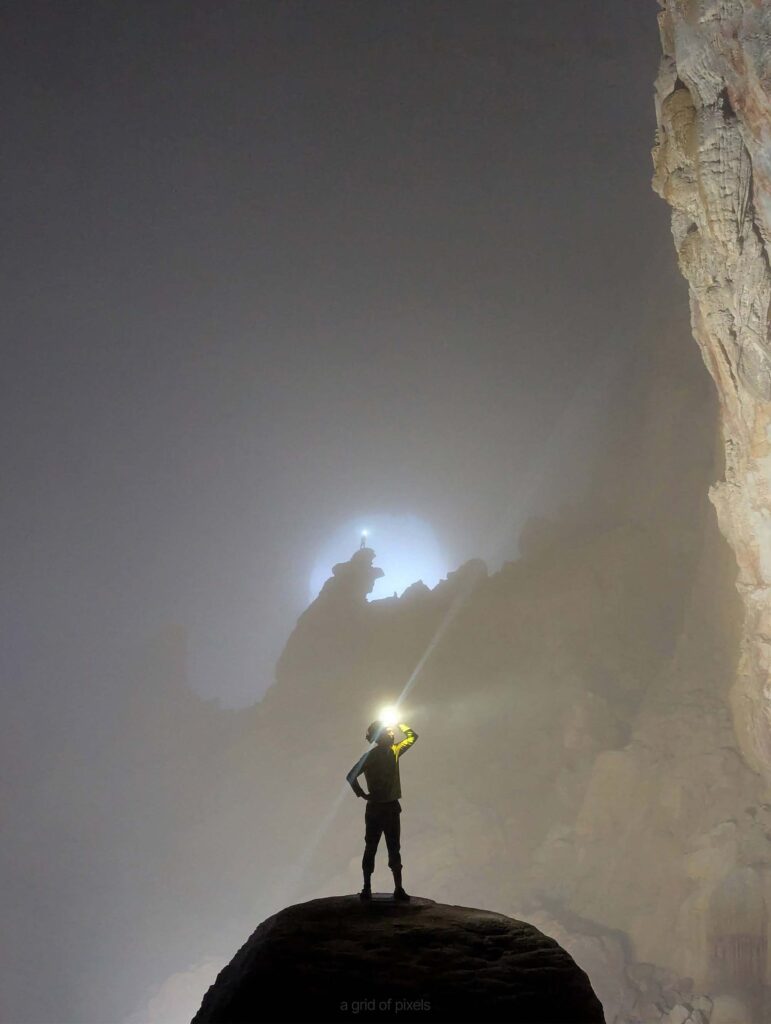
We ended the day with a quick swim in the cave’s pristine pool. The water was cold, pure, and felt like something untouched for centuries. That night, we fell asleep in our tents pitched on an elevated level as if nature perfectly designed it for us. We were then lulled to sleep by the sound of a distant underground river humming through the darkness.
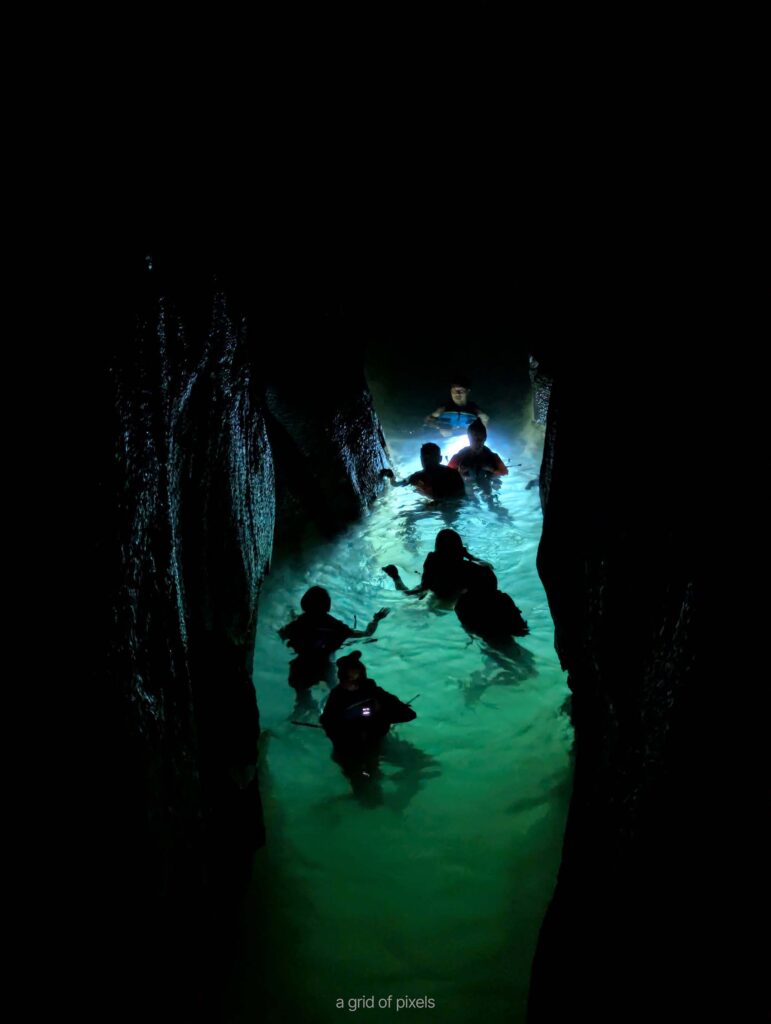
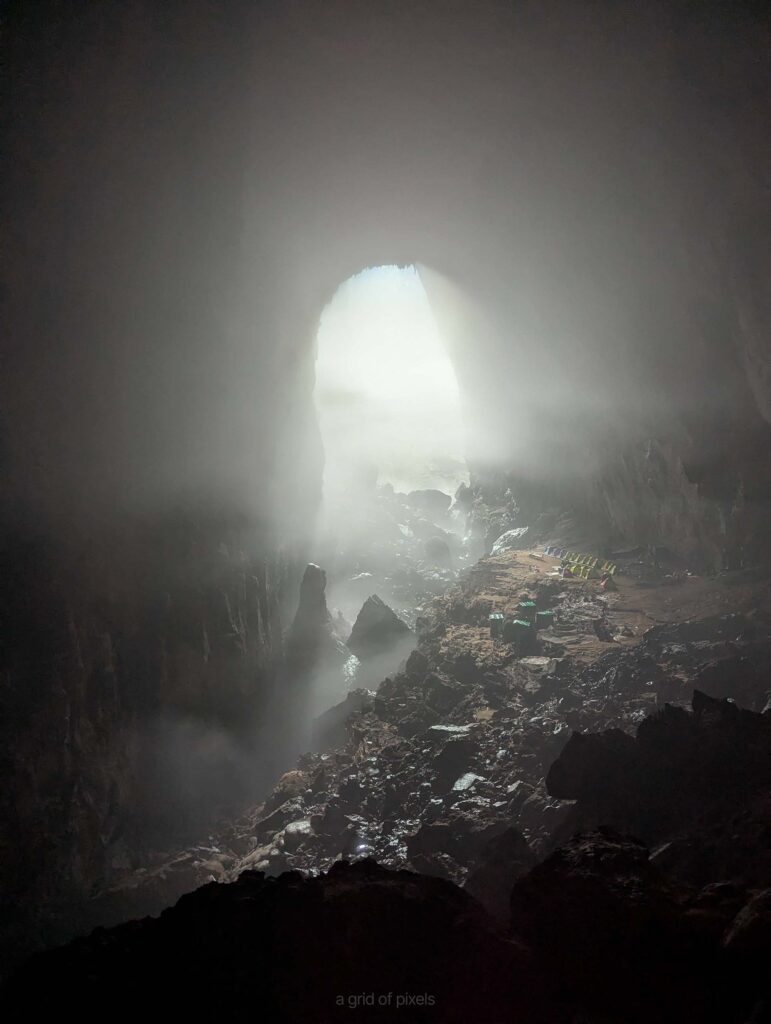
Day 3: Heart of the Cave
The deeper we went, the smaller we felt. As we ventured deeper into Son Doong, the scale hit us immediately. This place could fit a Boeing 747, or even the Empire State Building.
We started the day navigating over giant boulders slick with condensation. The rocks were cold, wet, and unpredictable. Summer in the cave meant humidity outside, which caused the cave walls and floors to sweat. Every step was a calculated risk.
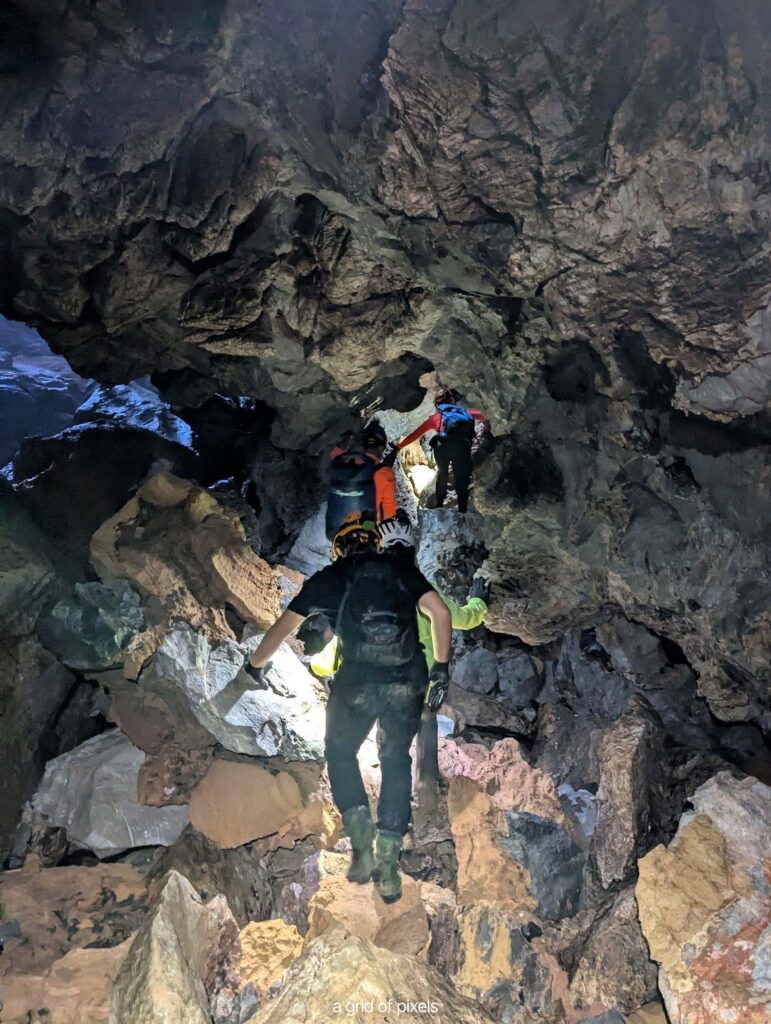
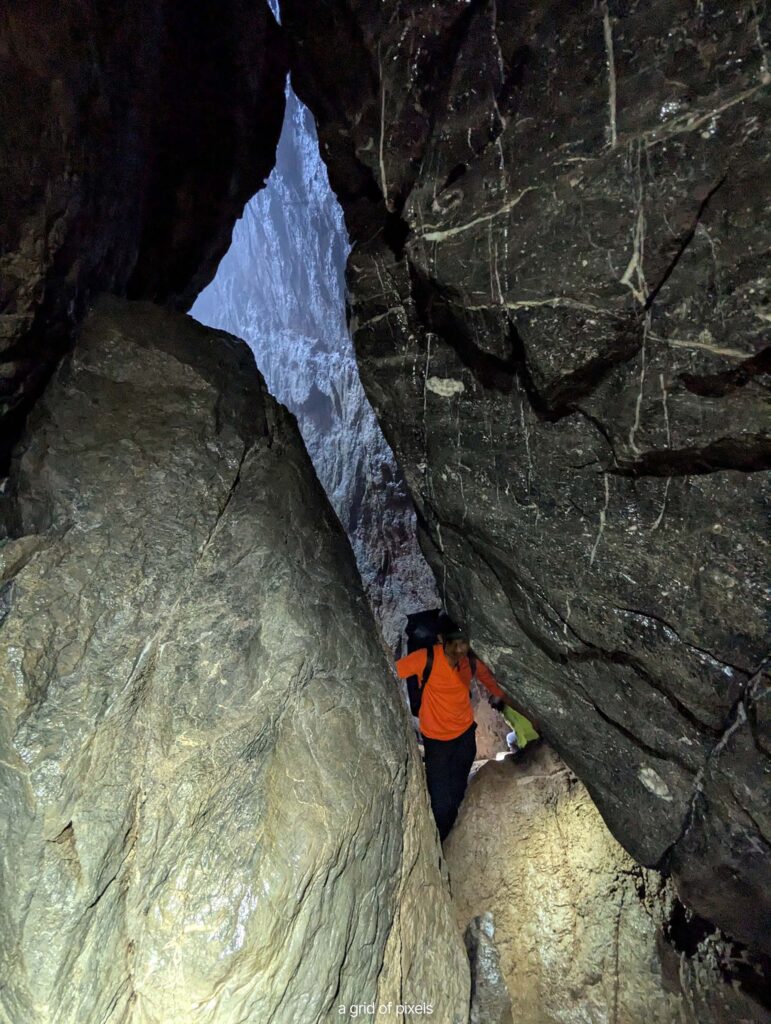
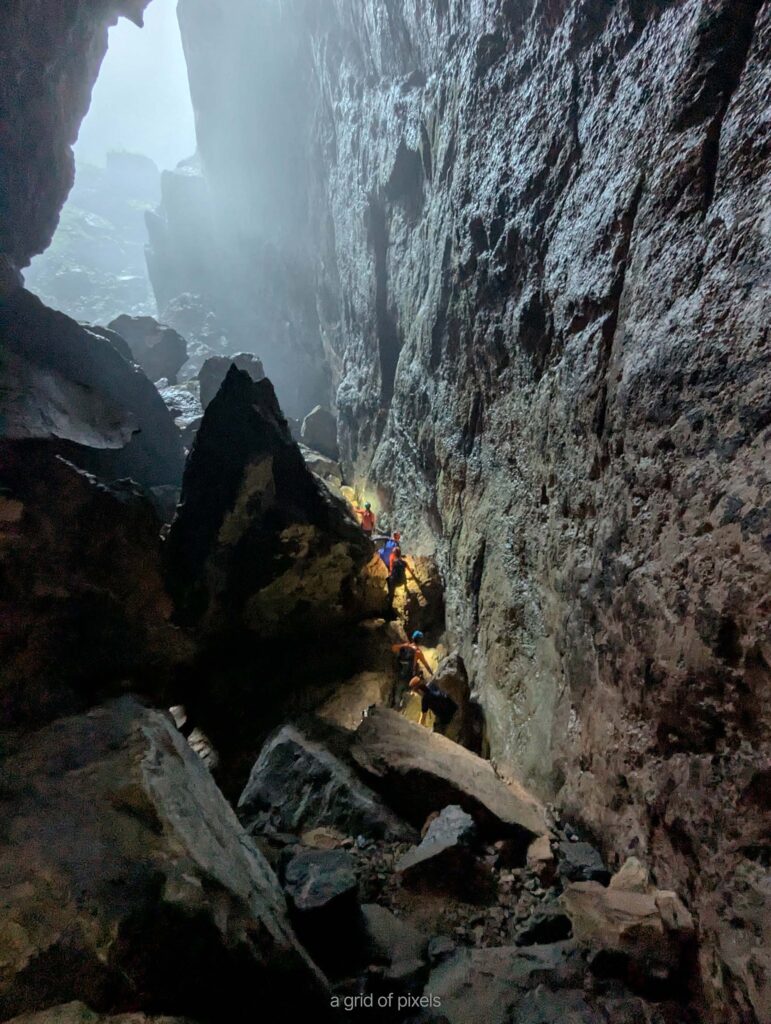
Despite the challenge, the sheer beauty of the place made it impossible to be frustrated for long. This stretch of the expedition was, without question, the most difficult for me. But nothing humbled me more than watching our porters move across it all with ease, carrying up to 30 kilograms of gear, some in simple plastic sandals. I carried only a water bottle and a DSLR camera. It’s impossible not to feel immense respect and gratitude for the strength and skill they bring to this journey.
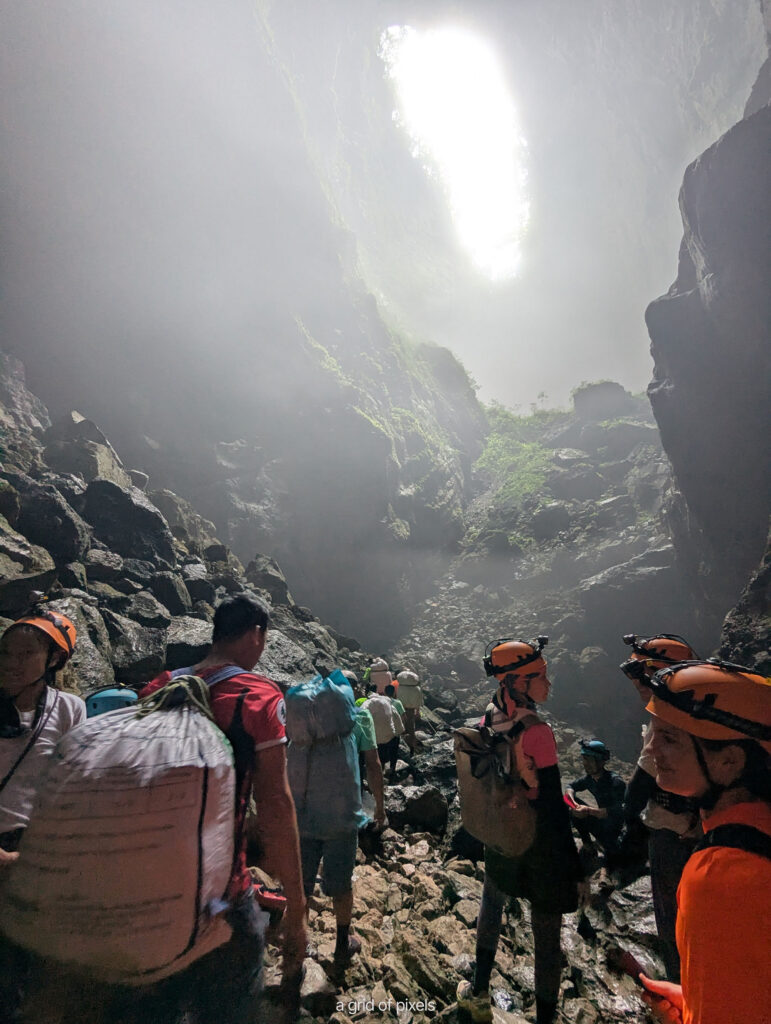
We reached one of my favorite viewpoints of the entire expedition. There’s a strange, surreal beauty in this cave. It doesn’t shout for attention… It just is, and you feel lucky just to be in its presence.
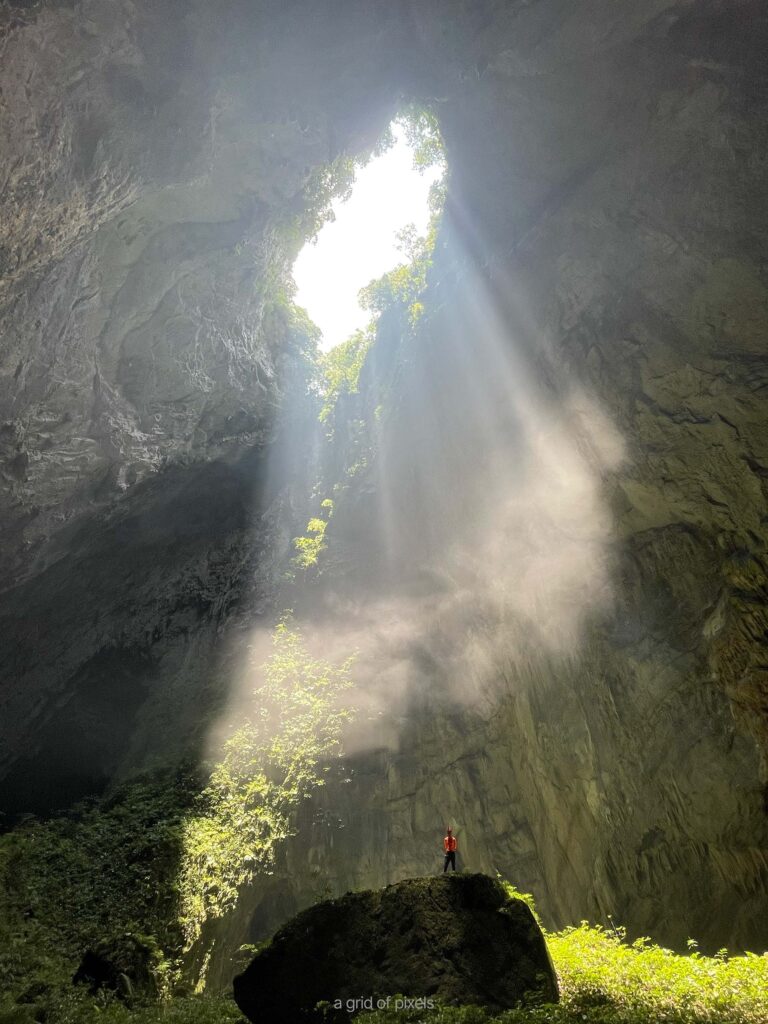
We kept moving and eventually entered one of Son Doong’s most iconic chambers, the “Garden of Edam” (click to see why it’s named this way). Here, sunlight filters through a collapsed section of the cave ceiling. The first true daylight we’d seen since entering. Lush jungle plants burst from the rock, thriving in the light that manages to reach them. Mist floated through the air, and clouds gently hovered inside the cave. Yes, clouds inside the Earth.
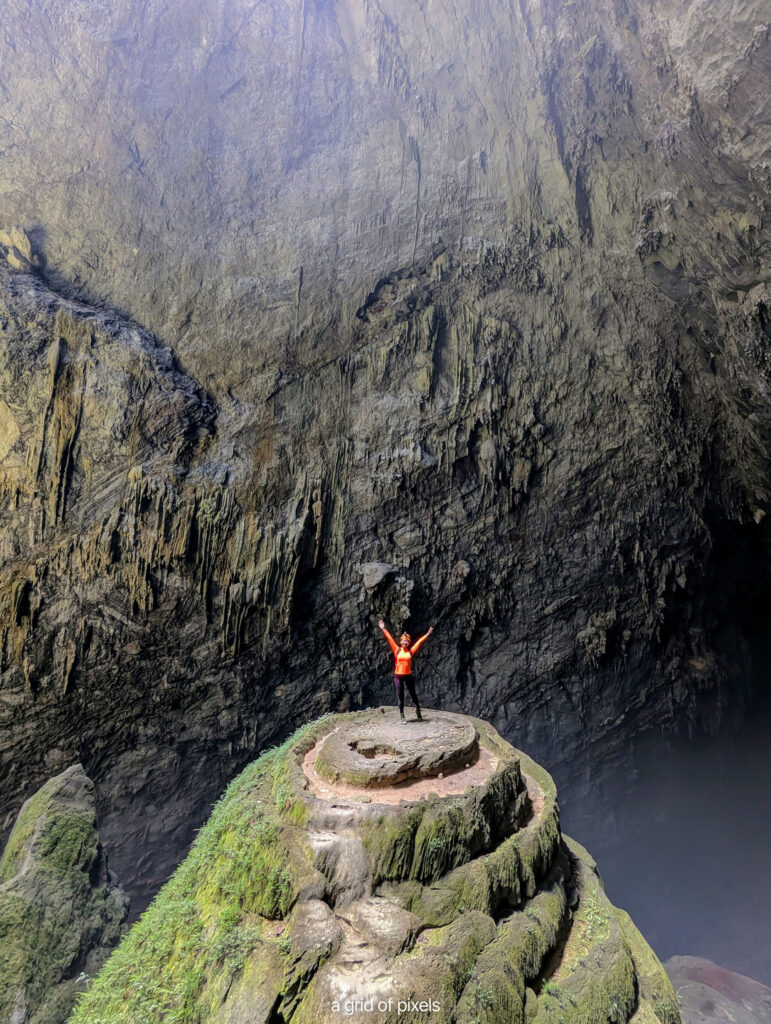
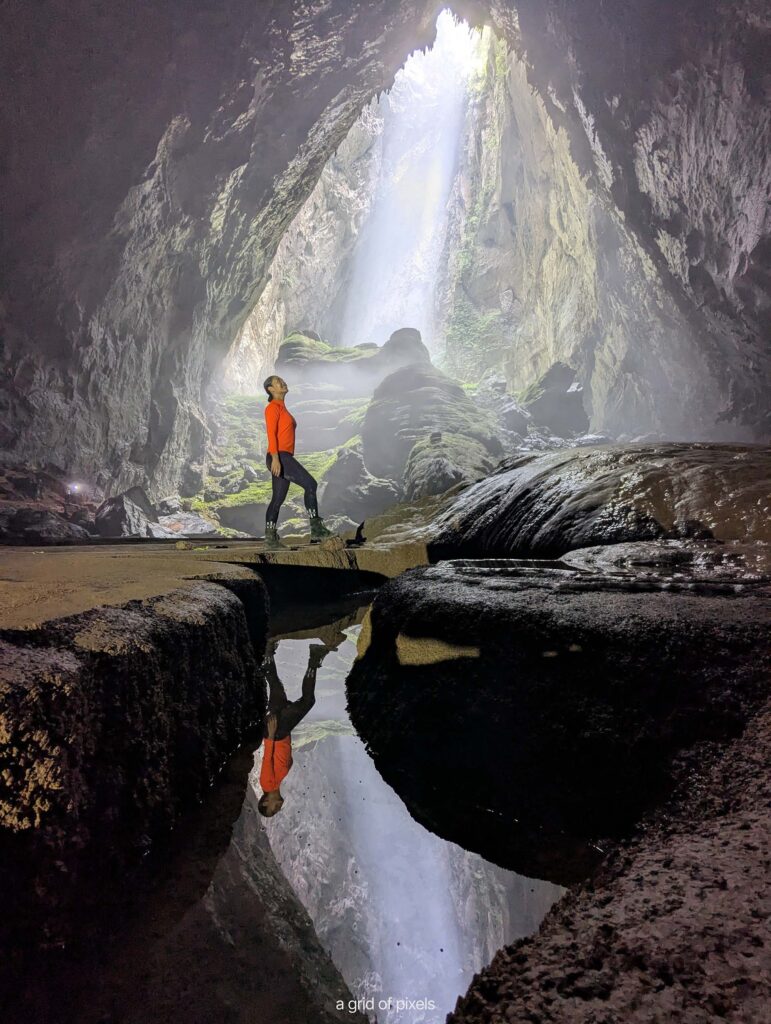
Then, we passed by the famous “Wedding Cake” formation, a layered, almost sculptural rock formation that looked exactly like its name. Then, looked up at the second doline that loomed above an untamed jungle. Wild chickens and even monkeys have fallen into this space and found ways to survive.
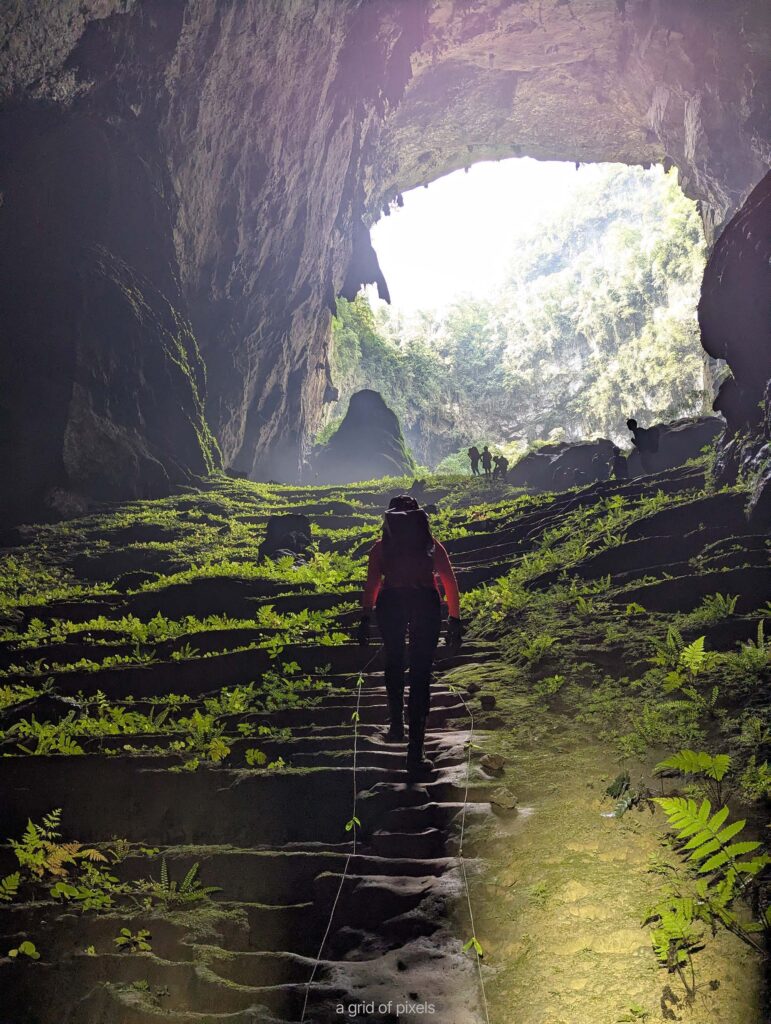
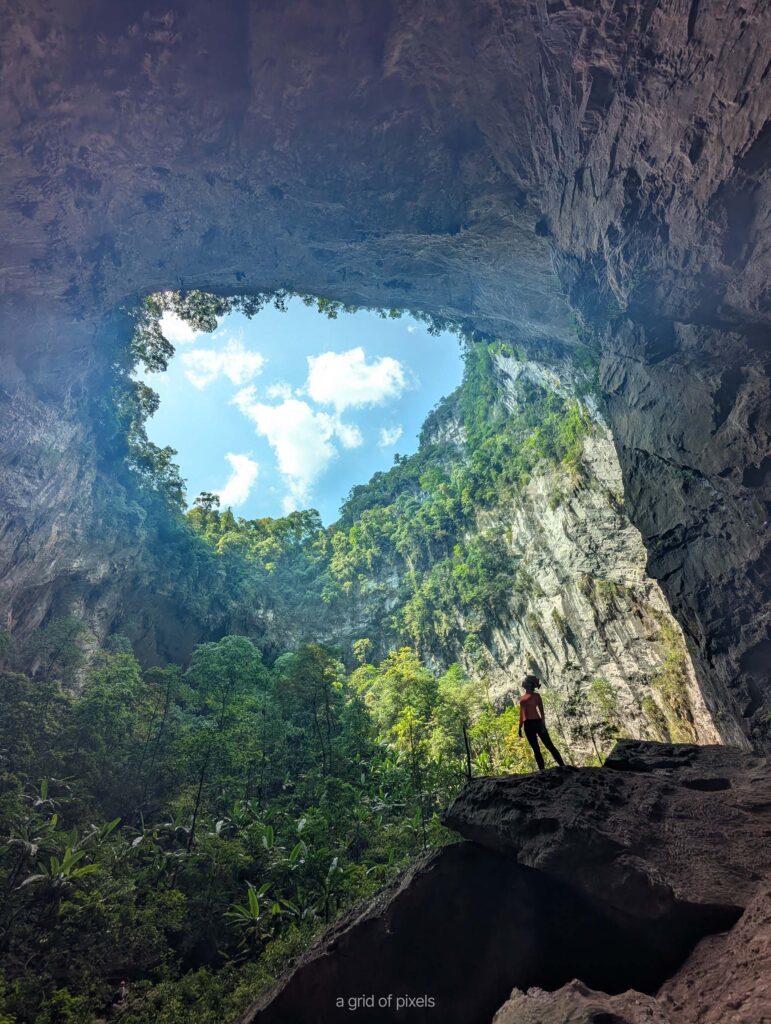
For dinner, I joined the porters and kitchen crew. There were 28 team members for just 10 guests. It was the first time I’d seen the entire crew in one place, and the sight honestly shocked me. Until then, their presence had been mostly quiet and scattered. Some leading, some behind, some always already ahead. Seeing them all together made one thing clear: it takes an enormous amount of effort and coordination to make a tour like this possible. What felt like a personal journey was, in reality, powered by a small, highly skilled army working in harmony behind the scenes.
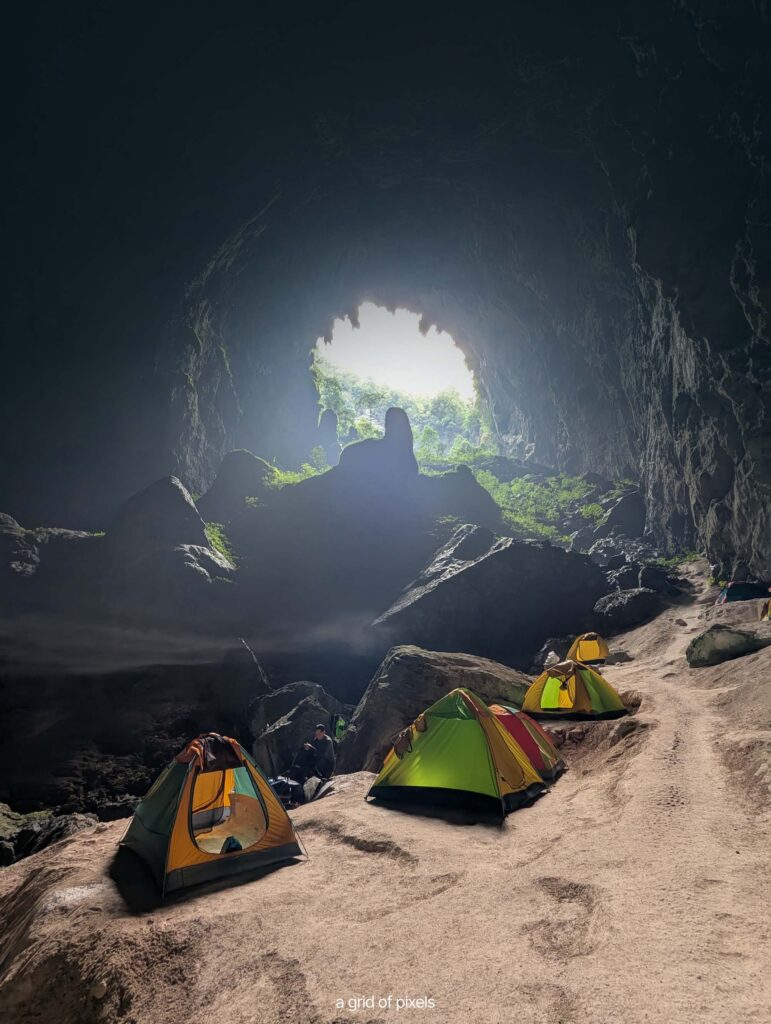
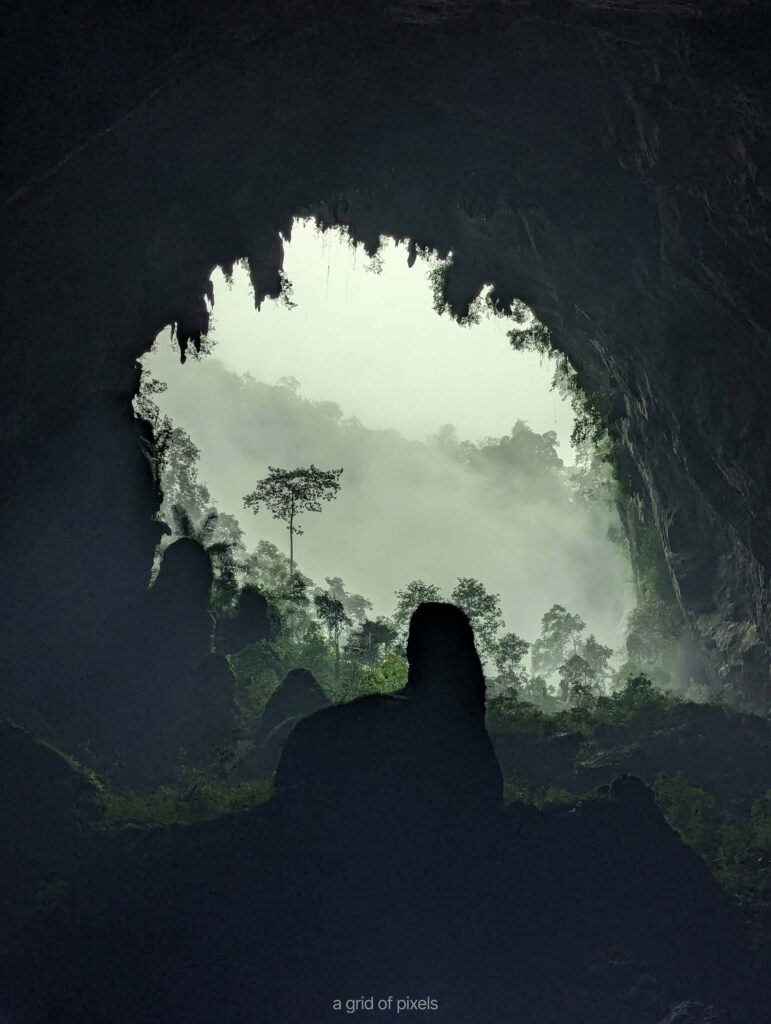
That night, stories were shared. Some about the cave, others about Vietnam’s complex history. All the while, lightning flashed across the sky, casting dramatic shadows against the cave walls. It felt cinematic, as if we were characters in a story far bigger than ourselves.
Day 4: The Final Push
Bittersweet. That’s how day four began.
We woke knowing the journey was ending, but not before the most epic send-off. We encountered the world’s tallest stalagmite, over 70 meters tall.
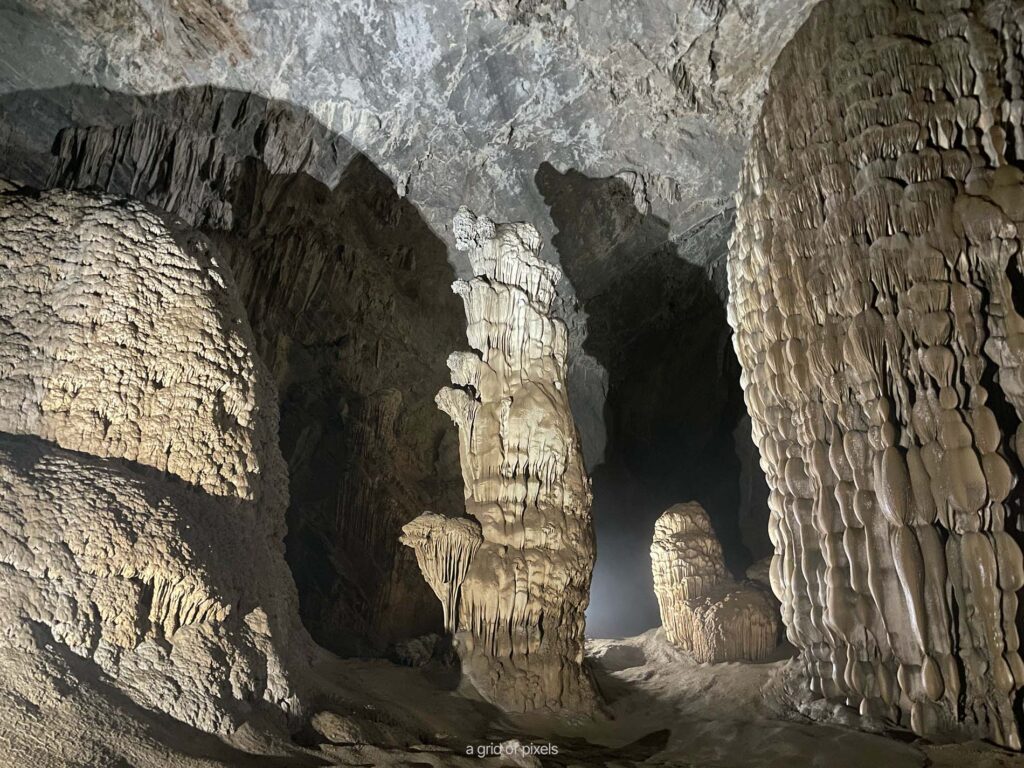
Blind fish darted in the waters below, evolved without eyes. So too did crickets, navigating the dark with other senses. Life, again, found a way.
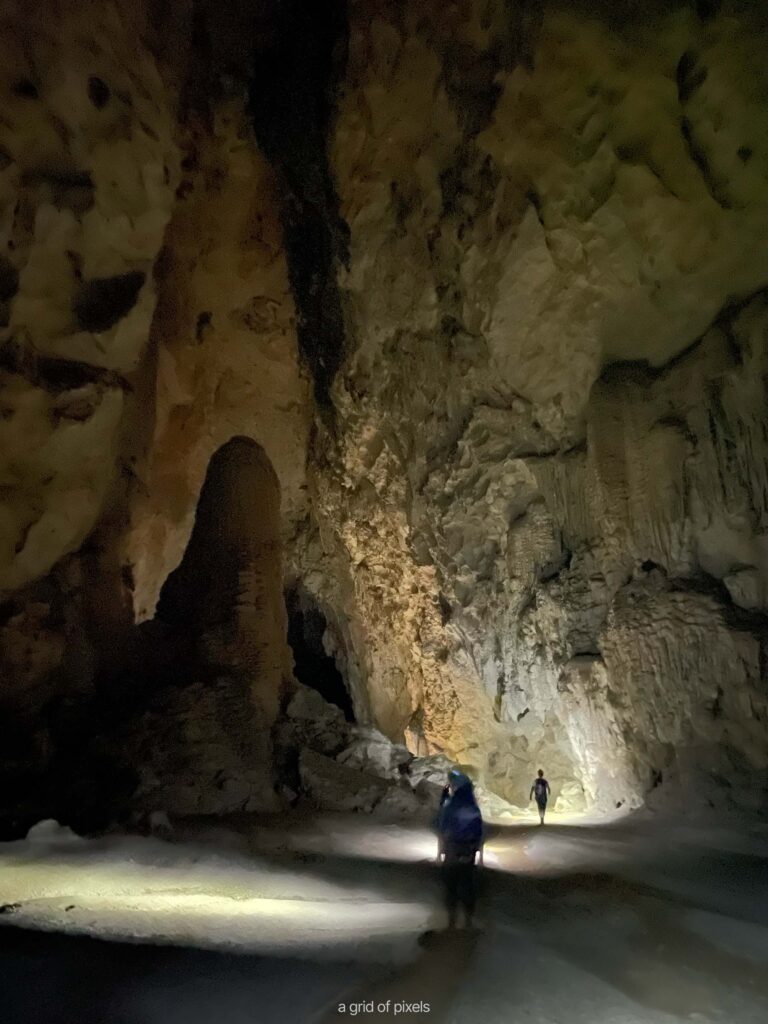
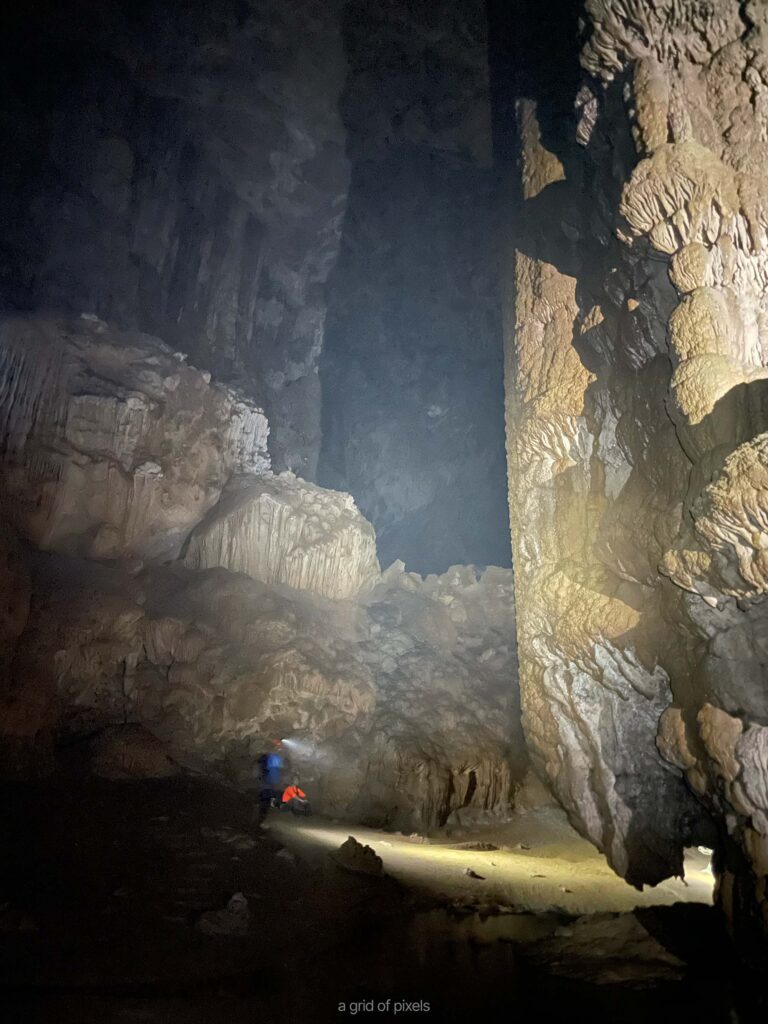
Our original plan to hike across the river had to change as the previous night’s rare summer storm had caused the water to rise unexpectedly. Rafts were needed, an occurrence our guide said hadn’t happened in summer for over eight years. Lucky us.
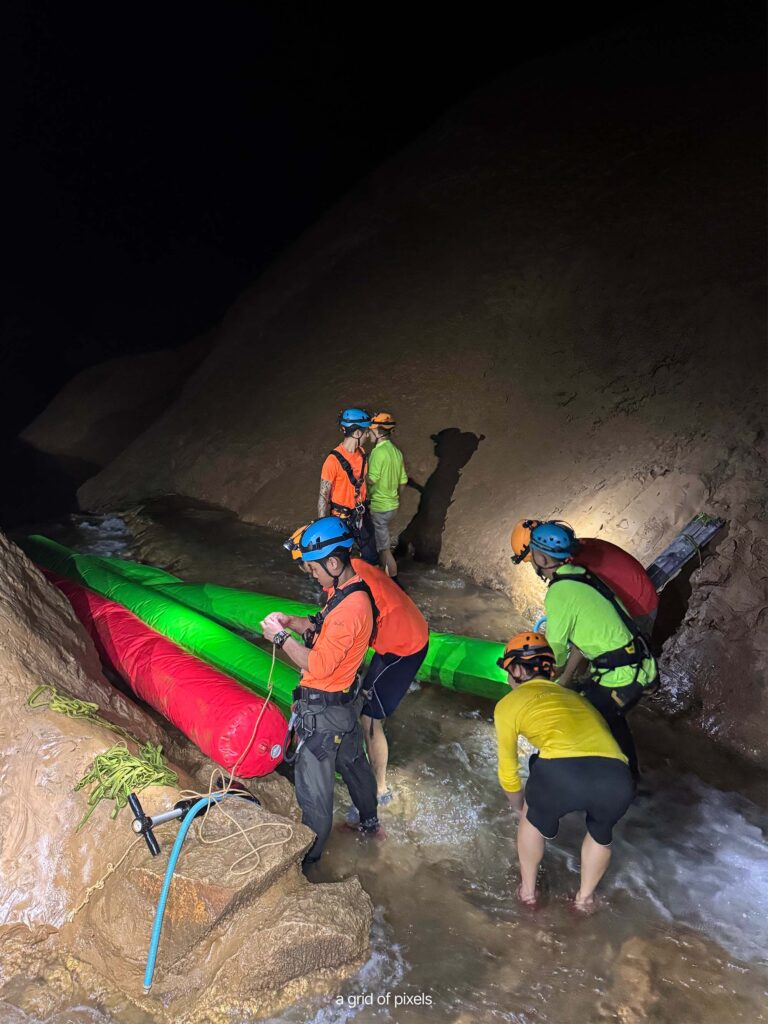
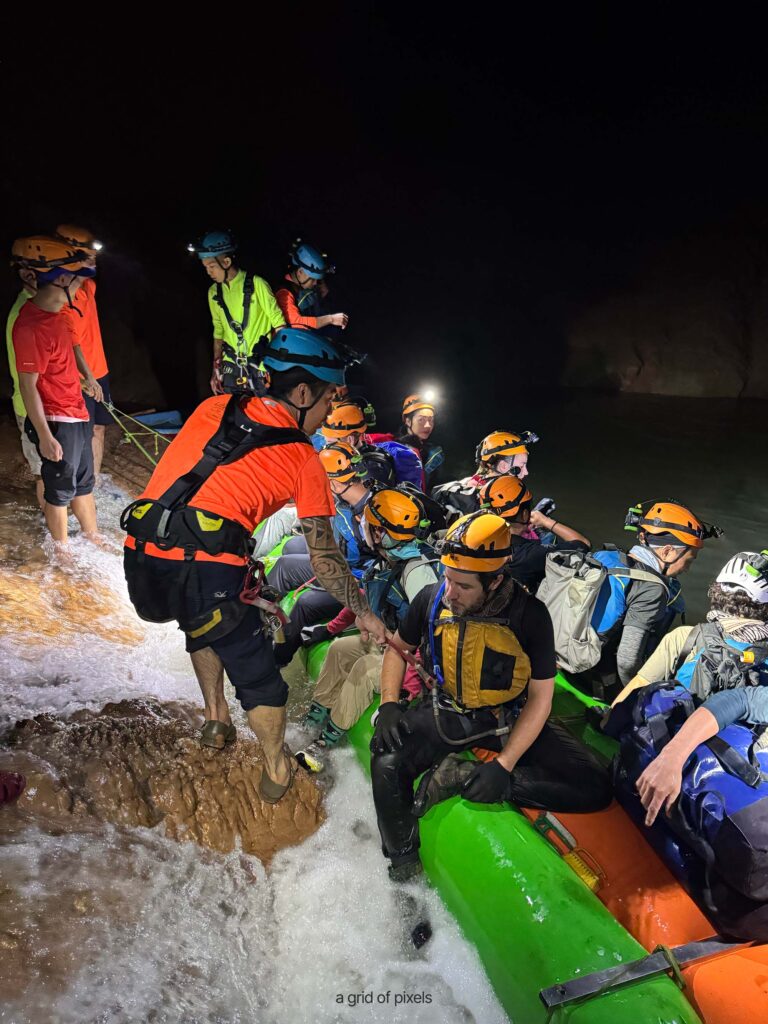
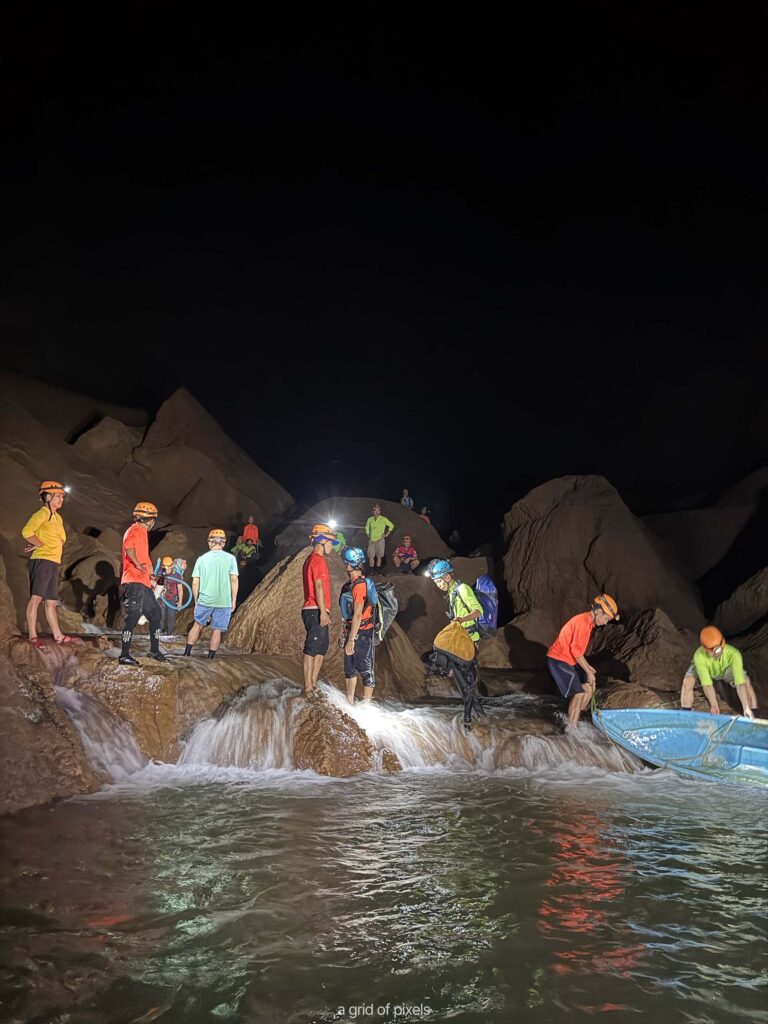
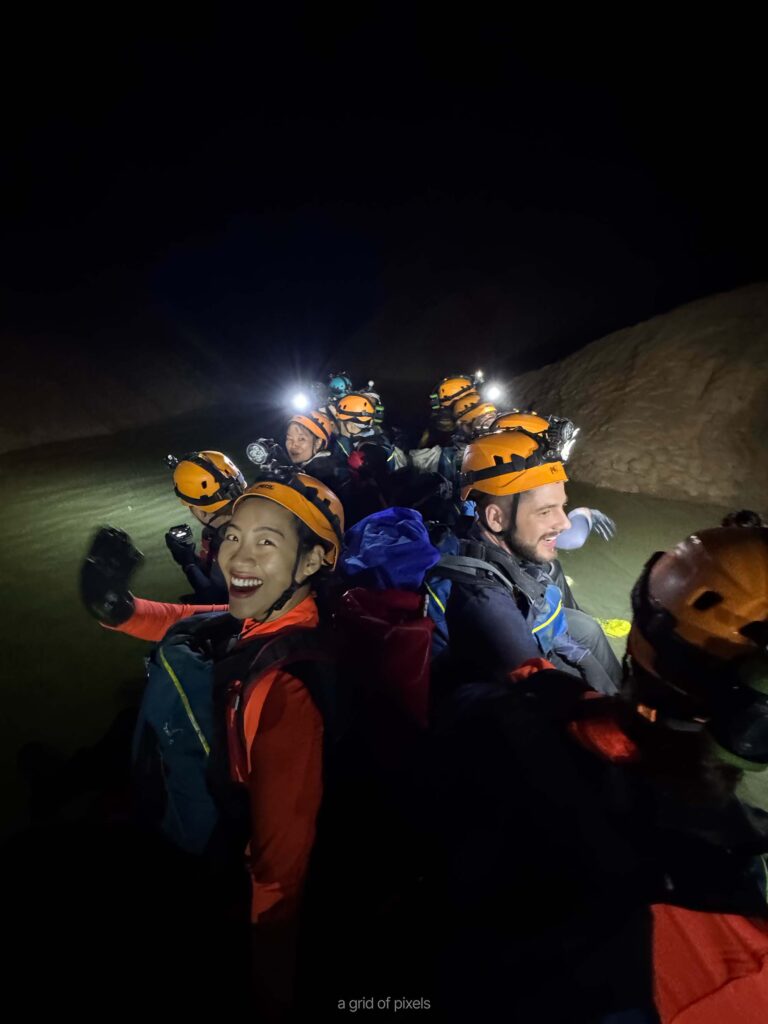
We floated silently beneath towering cave walls, the current taking us through a landscape both ancient and alive. Then came the climb: The Great Wall of Vietnam, a steep ascent demanding full upper-body strength.
The light at the end of the tunnel wasn’t just metaphorical… It was literally sunlight beckoning us back into the world.
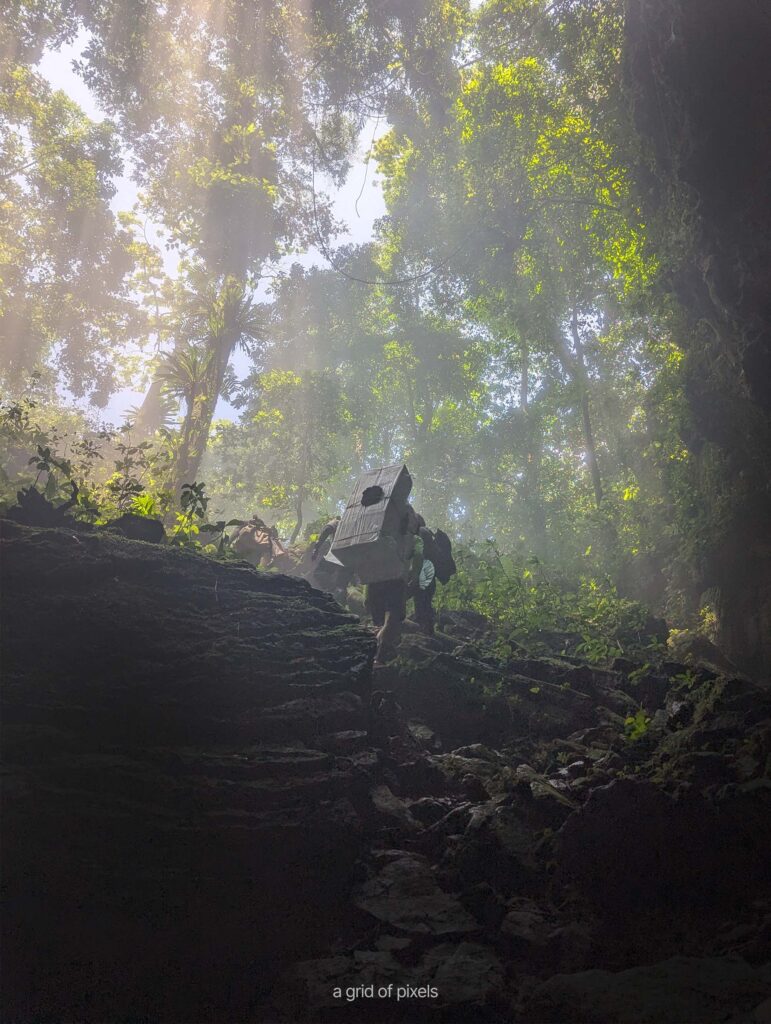
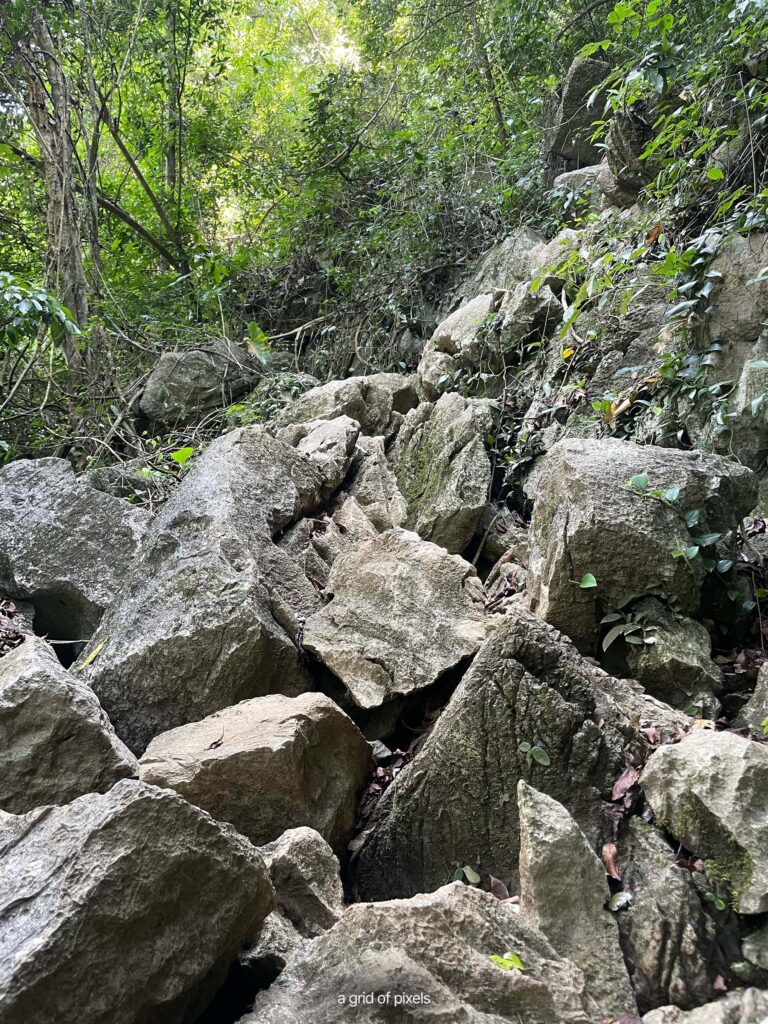
The final 1.5 hours were a brutal scramble across jagged rocks. But by then, the physical strain faded into the background. Our hearts were full, shaped by an experience that would stay with us, etched into memory, long after we left the cave behind.
After the Journey: What Son Doong Left Me With
On the final day, as I climbed out of the Earth and saw sunlight again, I didn’t feel relief. I felt silence. For nature. And for our planet, which still has places that don’t know our noise, our trash, or our algorithms. Son Doong reminded me of how much of this planet still exists beyond Wi-Fi, beyond footprints, beyond the noise we bring.
Gear That Got Me Through It
- Osprey Transporter Waterproof 25 – Durable, waterproof, and light. This backpack took beatings from mud and just kept going.
- Grip-Heavy Hiking Shoes – You’ll want shoes that hug wet rocks like your life depends on it (because it does). Just make sure they’re not waterproof and ideally have a drain system. I ended up just borrowing the hiking shoes from Oxalis, and they were so comfortable and perfect for me.
- Knee-High Socks – Fewer blisters, faster drying. You’ll thank me later. Gets ones that sit high. I purchased 3 pairs from the Oxalis office, and they were a lifesaver.
- Quick-Dry Travel Pants – You will get wet. I would recommend the Oxalis pants as they fit well and are super light. You can buy these at the Oxalis office before the trip.
- Long-Sleeved Shirts – I bought my long-sleeved shirts from the Oxalis office. They were perfect. Don’t be discouraged by the neon orange or neon yellow, as they’ll turn out great in photos.
- Rechargeable Headlamp – This will come in handy when you need to go to the bathroom at night.
- Eco-Friendly Dry Shampoo & Soap Sheets – No showers for days, and you still want to feel fresh.
- Baby Powder – Keeps your feet dry after wet feet day after day. Trust me, your toes will appreciate it.
- Tea Tree Oil – Natural antifungal, antibacterial, and a small miracle in a bottle for bites, scrapes, and post-hike foot care.
- Power Bank – You’ll be off the grid, but your camera won’t be. Essential for recharging headlamps, phones, or GoPros.
- DSLR Camera – Worth the weight for capturing Son Doong’s sheer scale. The photos don’t do it justice, but they come close. My only regret was not getting a wide-angle lens (35 mm or shorter).
- Travel Towel (Ultralight & Antibacterial) – Perfect for jungle humidity.
- Oil for Deterring Leeches – A must. Apply a small drop on your boots and socks.
- Earplugs – This is a must, especially on night 1, as you won’t be able to stop hearing the faint noise of birds chirping in the cave 24/7.
Treading Lightly: Sustainability Inside the Cave
This cave is fragile. So fragile that only one operator (Oxalis) runs guided expeditions, strictly monitored and capped to protect its ecosystem. There’s no electricity, no permanent camps, and no waste left behind.
- Water Matters – No plastic bottles allowed. Bring a reusable, filtered bottle.
- Stay on Path – Even the moss and ferns are ancient and vulnerable.
- Zero Waste – Every scrap, every wrapper. Pack it in, pack it out.
- Support Local Conservation – A portion of your expedition fee supports local communities and forest protection. Learn about what they’re doing behind the scenes here.
Thinking of doing Son Doong?
Leave a comment or DM me on Instagram @agridofpixels for a 5% discount on your first Oxalis adventure tour.